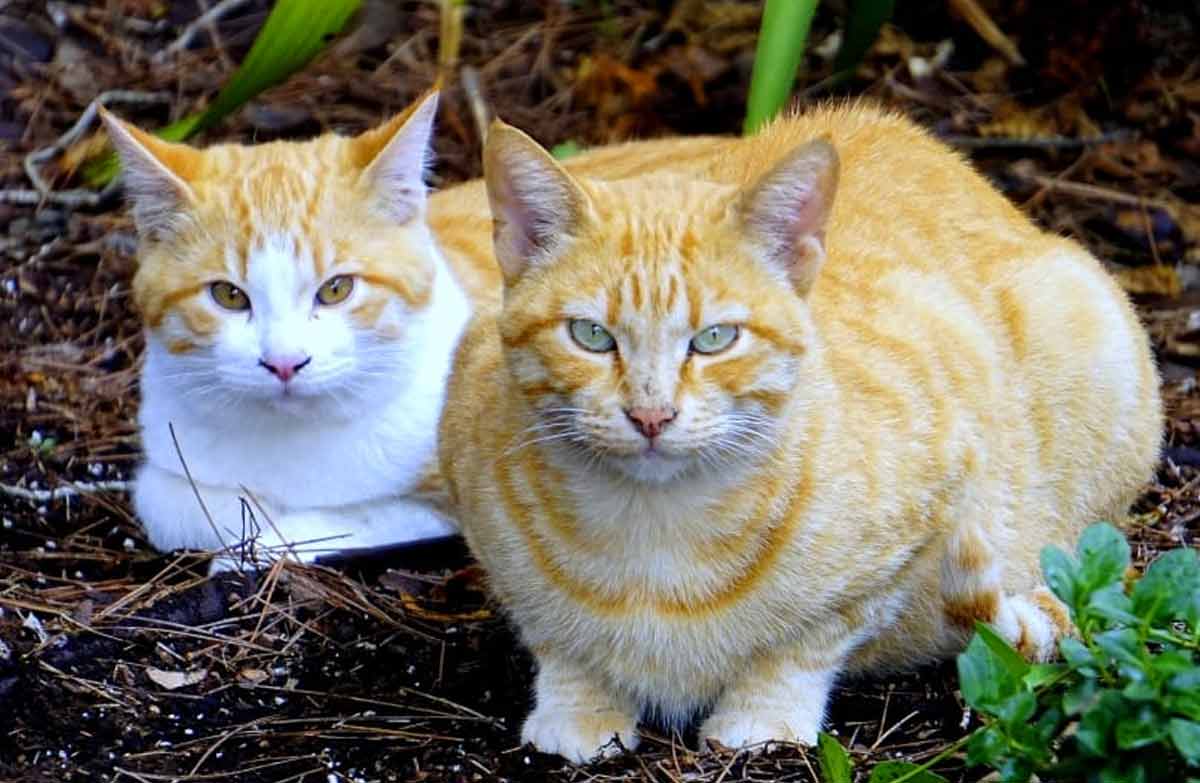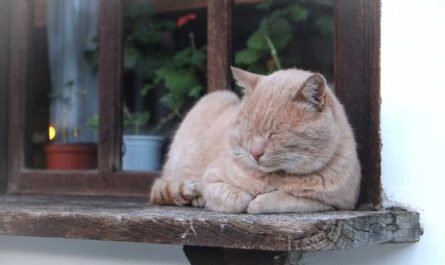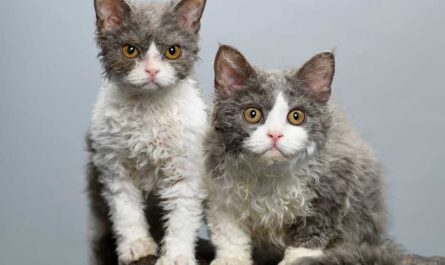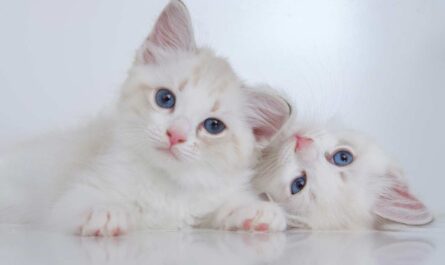Do cats enjoy mating? Have you ever witnessed your feline friend yowling dramatically and pacing restlessly around the house? Perhaps you’ve noticed them spraying furniture or attempting to dart out the door at every opportunity. This curious behavior is a sign that your cat is entering estrus, also known as being “in heat.” During this time, their bodies are driven by powerful hormones to reproduce, leading to a flurry of activity that might leave you wondering – do cats enjoy mating?
Contrary to popular belief, feline mating isn’t necessarily a romantic encounter filled with purrs and cuddles. In this article, we’ll delve into the fascinating world of feline reproduction, exploring the biological and hormonal factors that influence mating behavior in cats. We’ll explore the unique anatomy of male and female cats, unveil the secrets of the feline heat cycle, and understand the triggers that motivate male cats to seek out mates. Most importantly, we’ll discuss alternative strategies for responsible pet ownership to ensure your cat’s well-being and prevent unwanted litters. so, buckle up and prepare to separate feline fact from feline fiction!
The Biology Behind the Purr: Understanding Feline Reproduction
Unlike their cuddly canine companions, cats are what biologists call “induced ovulators.” This means that ovulation, the release of an egg from the ovary, isn’t triggered automatically by the menstrual cycle, as it is in humans and other mammals. Instead, in female cats, ovulation is stimulated by the physical act of mating. Let’s take a closer look at the key players in this fascinating reproductive dance:
Anatomy & Physiology: Built for Procreation (but not pleasure)
The Feline Ladies: A female cat’s reproductive system includes ovaries, fallopian tubes, uterus, cervix, and vagina. Unlike humans who have a visible external reproductive organ, a female cat’s vulva is a small slit located near her tail. During estrus, hormonal changes cause the vulva to swell and become more noticeable.
The Tomcats: Male cats, on the other hand, have a barbed penis that plays a role in stimulating ovulation in females. It’s important to note that this barbed feature is not for the female’s pleasure, but rather a biological mechanism that aids in ovulation and potentially sperm competition.
These anatomical differences highlight a key point: feline reproduction is driven by primal instincts and biological needs, rather than emotional attachment or enjoyment.
The Estrous Cycle: A Hormonal Rollercoaster
The feline estrous cycle, which typically lasts for a few days to a week, is orchestrated by a complex interplay of hormones. During this time, a surge in estrogen levels triggers a series of behavioral changes in female cats. They become more vocal, rubbing against objects and people, and displaying a characteristic posture with their tails held high. This flamboyant behavior serves as a beacon to potential mates, advertising their receptivity.
As the estrus cycle progresses, another hormone, progesterone, rises. This hormone prepares the uterus for a potential pregnancy. However, if mating doesn’t occur, progesterone levels eventually decline, and the cycle resets, potentially recurring every few weeks until the cat becomes pregnant or is spayed.
Tomcat Triggers: Driven by Scents and Territory
Male cats, also known as tomcats, are primarily motivated by pheromones – chemical signals released by female cats in heat. These invisible scents act as a powerful attractant, drawing tomcats from far and wide. In addition to pheromones, territorial instincts also play a role. Tomcats are naturally inclined to defend their territory from rival males, and mating with females within their territory ensures the continuation of their genes.
So, the next time you witness your cat exhibiting these characteristic behaviors, remember – it’s all about biology! In the next section, we’ll explore the alternative strategies available to responsible pet owners to manage these instincts and ensure a happy and healthy life for their feline companions.
The Mechanics of Mating: A Functional Act
Ever wondered what goes on behind the closed door (or cat flap) when your feline friend is in heat? Unlike humans, cat mating is driven primarily by instinct and biology, with less emphasis on emotional connection. Let’s delve into the mechanics of feline reproduction:
Beyond Romance: A Biological Drive
Unlike Hollywood portrayals, cat mating isn’t a scene straight out of a romantic comedy. It’s a quick and efficient process driven by hormones and the desire to procreate. The female cat, in heat and ready to mate, will release pheromones – special scents – that attract male cats in the vicinity.
The Mating Ritual: A Dance of Instinct
The mating sequence involves a series of behaviors:
- Vocalizations: The female cat might yowl or meow loudly, advertising her availability to potential mates.
- Courting Behaviors: The male, drawn by the pheromones, may rub against the female, nuzzle her, and let out vocalizations of his own.
- The Critical Neck Bite: This might seem like a rough start, but the male cat will often grab the scruff of the female’s neck with his teeth. This is believed to stimulate ovulation, the release of eggs from the ovaries, and may also help immobilize the female during mating.
Ouch Factor: A Biological Explanation for Discomfort
The actual mating act is brief, lasting only seconds to a few minutes. However, it can be uncomfortable for the female cat. This is due to the barbed anatomy of the male cat’s penis, which is designed to stimulate ovulation and potentially remove sperm from previous matings. The female’s yowls or cries during mating are more likely a reaction to this discomfort rather than distress.
Multiple Mating: Nature’s Strategy for Reproduction
Unlike humans who typically have one father per litter, female cats (known as queens in the breeding world) are polyandrous. This means they can mate with multiple males during a single heat cycle. This behavior, from an evolutionary standpoint, increases the chances of a successful pregnancy and ensures genetic diversity among the kittens. So, a single litter of kittens could potentially have multiple fathers.
Beyond the Basics: Exploring Feline Sexuality
Cat mating behavior can be a bit of a mystery to us humans. Their body language and vocalizations can be hard to decipher, leaving us wondering what’s really going on. Let’s delve a little deeper into the fascinating world of feline sexuality, exploring some common questions and dispelling a few myths.
Pleasure or Pain?: The Great Cat Sex Debate
Have you ever witnessed your cat in heat and wondered if mating is pleasurable for them? The truth is, unlike humans and some other animals, feline mating isn’t about romantic love or achieving orgasm. It’s a purely biological response driven by hormones and instincts to reproduce.
Here’s why the concept of feline sexual pleasure gets a little fuzzy:
- The Anatomy Factor: A male cat’s penis has tiny barbs that point backward. These barbs help stimulate ovulation (egg release) in the female, but they can also cause some discomfort during mating. This might explain why female cats sometimes yowl or hiss during the act.
- Focus on Procreation: A cat’s primary goal during mating is to get pregnant. There’s no elaborate foreplay or extended cuddling – the act itself is usually quite brief and to the point!
Important to Remember: While mating might not be pleasurable in the human sense, it doesn’t necessarily mean it’s painful for cats either. They simply have a different biological experience.
Mating Vocalizations: Decoding the Meows and Yowls
The symphony of sounds that often accompanies cat mating can be quite the head-scratcher. Let’s break down what those vocalizations might mean:
- The Call of the Wild: A female cat in heat (estrus) will often emit loud yowls or meows. These vocalizations are primarily a way to advertise her availability to potential mates and attract suitors from afar.
- Not Always Distress: While some yowls during mating might indicate discomfort caused by the barbs on the male’s penis, it’s important to distinguish these from true distress calls. If your cat seems overly scared or aggressive, it’s best to separate them.
- Communication is Key: Mating vocalizations can also serve as communication between the cats. They might use meows, hisses, or growls to signal their receptiveness or indicate the need for a break.
The Bottom Line: Pay attention to your cat’s body language alongside the vocalizations. A hissing cat with flattened ears is likely expressing discomfort, while a yowling cat with a raised tail might simply be advertising her availability.
Post-Mating Behavior: A Shift in Focus
Once mating is complete, a shift in behavior is often observed in both the male and female cat. Here’s what you might notice:
- Reduced Vocalization: The intense yowling associated with estrus typically subsides once the female cat has mated.
- Increased Rest and Recuperation: Both cats might become less active and focus on resting after the physical exertion of mating.
- Pregnancy Watch: If conception has occurred, the female cat’s body will start preparing for pregnancy. She might become more affectionate and exhibit nesting behaviors in search of a safe place to give birth.
Understanding these post-mating behavioral changes can help you anticipate your cat’s needs and provide them with the care and support they need during this crucial time.

Beyond Reproduction: Alternative Options for Cat Companions
The act of mating plays a vital role in feline reproduction, but it’s important to understand that not all cats need to experience it. For many cat companions, a fulfilling life can exist outside the realm of breeding. Here, we’ll explore some alternative options and the benefits they offer:
Benefits of Spaying/Neutering: A Purrfect Choice for Many Cats
Spaying and neutering are surgical procedures that remove the reproductive organs of female (spaying) and male (neutering) cats. These procedures are not just about preventing unwanted litters – they offer a multitude of health and behavioral benefits for your feline friend:
- Enhanced Health: Spaying female cats significantly reduces their risk of uterine infections and mammary cancer, both serious health concerns. Neutering males reduces their risk of testicular cancer and prostate problems.
- Reduced Roaming: Intact male cats are driven by hormones to roam in search of mates. Neutering drastically reduces this urge, keeping your cat safer from dangers like traffic accidents or fights with other cats.
- Milder Temperament: Both male and female cats often exhibit less aggressive behavior after spaying or neutering. This can lead to a calmer, more relaxed feline companion, especially beneficial in multi-cat households.
- Less Marking: Intact male cats tend to mark their territory with urine, a behavior that can be unpleasant for pet owners. Neutering significantly reduces or eliminates this behavior.
- Reduced Strain on Shelters: Every year, countless cats end up in shelters due to pet overpopulation. Spaying and neutering your cat helps prevent unwanted litters and contributes to a more manageable feline population.
Spaying and neutering are considered routine veterinary procedures with a high success rate. Talk to your veterinarian about the recommended age for spaying or neutering your cat to discuss the best course of action for your furry friend’s health and well-being.
Debunking Myths: Separating Fact from Fiction
There are some common misconceptions surrounding spaying and neutering cats. Here’s a chance to shed some light on these myths:
- Myth: Spaying/Neutering Makes Cats Lazy or Gain Weight: While some weight gain might occur after spaying or neutering, this is often due to a decrease in activity levels rather than the surgery itself. Maintaining a healthy diet and providing opportunities for exercise can help your cat stay trim.
- Myth: Spaying/Neutering Alters My Cat’s Personality: Spaying and neutering primarily affect hormone-driven behaviors, not your cat’s unique personality. In fact, these procedures can lead to a calmer and more affectionate feline companion.
By understanding the facts, you can make an informed decision about spaying or neutering your cat, ultimately promoting their long-term health and happiness.
Adoption Advocacy: Giving Shelter Cats a Second Chance
Did you know that countless cats of all ages and breeds are waiting for loving homes in shelters and rescue organizations? These cats are already spayed or neutered, vaccinated, and ready to shower you with affection. Considering adoption offers a wonderful alternative to breeding and allows you to welcome a deserving cat into your life.
Opening your home to an adopted cat provides them with a safe and loving environment, and you gain a loyal and furry companion. Shelters and rescues can match you with a cat who fits your lifestyle and personality, making adoption a win-win situation for everyone involved.
By choosing to spay or neuter your cat and considering adoption, you’re making a responsible choice that benefits your feline friend, shelters, and the overall cat population. So, the next time you’re thinking about expanding your furry family, consider the many advantages of a fulfilling life beyond reproduction for your cat companion.
Understanding Feline Communication: It’s Not Just About Mating
Our feline companions may not speak our language, but they have a whole other way of communicating! Cats are masters of nonverbal cues, using their body language and vocalizations to express a wide range of emotions and needs. By learning to “decode” these messages, you can build a stronger and more fulfilling bond with your furry friend. How AI, ChatGPT maximizes earnings of many people in minutes
Feline Body Language: A Tail Tells a Tale
Unlike humans who rely heavily on spoken words, cats communicate primarily through body language. Here are some key elements to pay attention to:
- Tail Talk: A cat’s tail is like a furry exclamation point, conveying a wealth of information. A high, held-up tail often signifies confidence and alertness, while a swishing tail can indicate irritation or frustration. A tucked tail tucked between the legs usually means fear or submission.
- Ear Play: Ears play a crucial role in feline communication. Perked-up ears signal curiosity and attentiveness, while flattened ears can indicate aggression or fear. A cat who rotates their ears independently might be trying to pinpoint a sound or source of interest.
- Posture Power: A cat’s posture speaks volumes. A relaxed cat with a stretched-out body and soft eyes is content and comfortable. An arched back and puffed-up fur often indicate a threatened or defensive cat.
Understanding these basic body language cues will help you better understand your cat’s mood and respond accordingly. Motivation – Mind – Success – Thinking – Productivity – Happiness
Interpreting Meows: More Than Just a Meow
We often think of meows as a cat’s way of saying “hello,” but these vocalizations can hold a variety of meanings. A short, high-pitched meow might be a friendly greeting, while a long, drawn-out meow could be a request for food or attention. Pay attention to the context and your cat’s body language to decipher the specific message they’re trying to convey.
Here are some common meow “translations” to get you started:
- The Greeting Meow: A short, chirpy meow is often a friendly hello or a way to acknowledge your presence.
- The Food Frenzy Meow: A long, drawn-out meow, sometimes accompanied by rubbing against your legs, is a classic “feed me now” plea.
- The Attention-Seeking Meow: This meow can vary in pitch and length, but is usually accompanied by persistent eye contact or nudging behavior. It’s your cat’s way of saying, “Hey, play with me!”
- The Distress Meow: A low, drawn-out meow with a trembling quality can indicate fear, pain, or discomfort. If you hear this type of meow, it’s important to investigate and address the cause of your cat’s distress. Business – Money Making – Marketing – E-commerce
By learning to interpret your cat’s meows, you can become more responsive to their needs and strengthen your bond.
Building a Bond: Beyond Meow and Purr
Understanding feline communication is a two-way street. Here are some ways to foster a strong and loving relationship with your cat:
- Positive Reinforcement: Reward good behavior with treats, praise, and gentle petting. This encourages your cat to associate positive experiences with you.
- Playtime is Pawsome: Engage in regular playtime sessions using interactive toys or catnip-filled objects. This provides mental and physical stimulation and strengthens your bond.
- Affection on Their Terms: Cats are individuals with varying preferences for affection. Some cats love to cuddle, while others prefer gentle petting or head scratches. Respect your cat’s boundaries and offer affection in a way they find enjoyable. Health books, guides, exercises, habits, Diets, and more
By learning to “speak cat” and responding to their cues with love and respect, you’ll create a lasting and fulfilling connection with your feline friend.
Other Interesting Articles
- How to Make Your Cat Really Happy: 29 Tips You May Try
- How to Train Your Cat to Stop Urine Marking? 12 Tips
- How Do Cats Communicate Each Other? 11 Body Language
- 24 Ways To Know If You Have An Extremely Happy Cat
- What Smells Do Cats Hate: 34 Scents You Must Avoid
- Everything You Need To Know About Cat Territory Marking
- 12 Reasons Why You Should Adopt A Second Cat
- 12 Reasons Cats Pee Outside the Litter Box: How To Solve
- 14 Reasons Why Cats Overgroom: Surefire Ways To Stop It
- Why is My Cat So Clingy? 13 Common Signs: 9 Caring Tips
- Is Your Cat Bored? 12 Common Signs: What You Can Do
- Stress in Cats: Causes, Symptoms, Remedies, Treatment
- 17 Common Signs Your Cat is Lonely: 10 Tips To Help Recover
- 14 Reasons My Cat is Acting Strange & Scared: What to Do?
- How Do Cats Hunt Their Prey, Mice, Bird, Fish, Rat For Food?
- How To Introduce A New Kitten To An Older Cat: 16 Tips
- 15 Reasons Why Do Cats Lick and Groom Each Other
- Domesticated Cats And Big Cats: 24 Similarities, Differences
- 21 Interesting Facts You Should Know About Feral Cats
- How to Socialize a Feral Kitten in 10 Simple Steps



